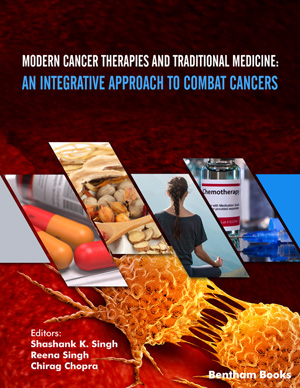Abstract
Background: Radioresistance is found to be the main therapeutic restriction in colorectal radiation therapy. The aim of this study was to investigate the synergistic effect of Etodolac (ET) and ionizing radiation on human colorectal cancer cells.
Methods: Pretreated HT-29 cells with ET were exposed to ionizing radiation. The radiosensitizing effect of ET was evaluated using MTT, flow cytometry, and clonogenic assay. The amount of nitrite oxide (NO) in irradiated cells was also measured with the Griess reagent.
Results: The present study found that pretreatment of HT-29 cells with ET decreases their survival and colony formation. Higher concentrations of ET cause total apoptosis and an increase in NO levels in irradiated cells.
Conclusion: Applying ET in a concentration-dependent manner had an incremental effect on the amount of apoptosis and cell death induced by radiation.
Keywords: Etodolac, radiosensitizing, colorectal cancer, apoptosis, ionizing radiation, flowcytometry.
Graphical Abstract
[PMID: 29801410]
[PMID: 33593084]
[http://dx.doi.org/10.7150/jca.44753] [PMID: 32626530]
[http://dx.doi.org/10.1080/09553002.2017.1304590] [PMID: 28281355]
[http://dx.doi.org/10.4103/aam.aam_56_18] [PMID: 31417011]
[http://dx.doi.org/10.2147/DDDT.S218022] [PMID: 31827319]
[http://dx.doi.org/10.1007/s10555-018-9742-0] [PMID: 29971572]
[http://dx.doi.org/10.1016/j.bcp.2010.06.039] [PMID: 20599771]
[http://dx.doi.org/10.1038/sj.bjc.6602187] [PMID: 15365572]
[http://dx.doi.org/10.3390/cancers11111776] [PMID: 31717983]
[PMID: 9533546]
[PMID: 11606413]
[http://dx.doi.org/10.2174/2212697X03666160118233255]
[http://dx.doi.org/10.1111/j.1600-0609.2005.00498.x] [PMID: 16104877]
[PMID: 25505745]
[http://dx.doi.org/10.1259/bjr/54004230] [PMID: 16177019]
[http://dx.doi.org/10.1016/j.ijrobp.2017.11.013] [PMID: 29413289]
[http://dx.doi.org/10.1046/j.1365-2133.2002.04849.x] [PMID: 12366409]
[http://dx.doi.org/10.1158/0008-5472.CAN-04-3028] [PMID: 15930309]
[PMID: 29688867]
[http://dx.doi.org/10.1002/1097-0215(200102)9999:9999<894:AID-IJC1146>3.0.CO;2-#] [PMID: 11275997]
[http://dx.doi.org/10.1016/S0016-5107(95)70045-5] [PMID: 8566633]
[http://dx.doi.org/10.3892/or_00000775] [PMID: 20372855]
[PMID: 27104573]
[http://dx.doi.org/10.1038/sj.onc.1208508] [PMID: 15735687]
[PMID: 20514410]
[PMID: 9815550]
[http://dx.doi.org/10.31557/APJCP.2019.20.6.1675] [PMID: 31244287]
[PMID: 15695394]
[http://dx.doi.org/10.1158/1078-0432.CCR-03-0192] [PMID: 15102673]
[http://dx.doi.org/10.2174/138161210790232149] [PMID: 20236067]
[http://dx.doi.org/10.21767/2472-1158.100058]
[http://dx.doi.org/10.1111/j.1349-7006.2012.02285.x] [PMID: 22448750]
[http://dx.doi.org/10.1055/s-0033-1350619] [PMID: 23881456]

























